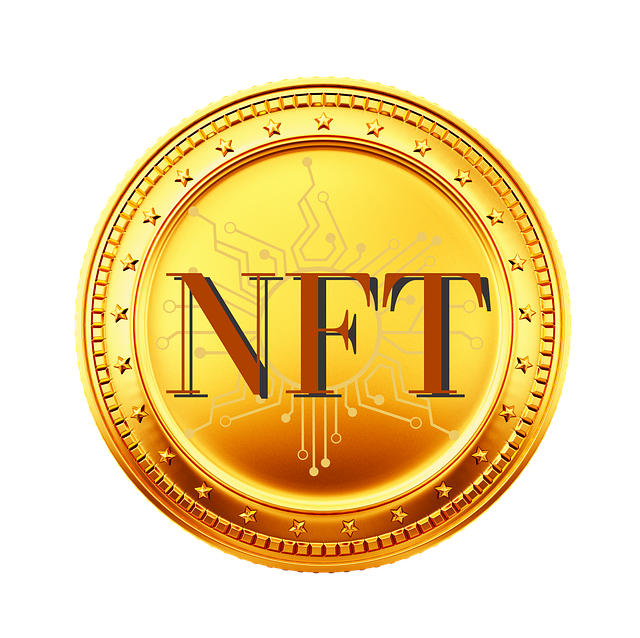Is Coinbase a Good Place to Buy Crypto? An In-Depth Review
Author: Jameson Richman Expert
Published On: 2025-09-24
Prepared by Jameson Richman and our team of experts with over a decade of experience in cryptocurrency and digital asset analysis. Learn more about us.
When evaluating whether Coinbase is a suitable platform for purchasing cryptocurrencies, it’s crucial to consider multiple facets—including its reputation, security protocols, user experience, fee structure, trading capabilities, regulatory standing, and ecosystem support. As an experienced investor navigating the often volatile and rapidly evolving crypto landscape, I’ve personally traversed Coinbase’s journey—from initial skepticism to a nuanced understanding of its strengths and limitations. This process involved confronting common pitfalls, understanding market nuances, and leveraging Coinbase’s offerings to optimize my crypto investments. This comprehensive review aims to provide an in-depth analysis, backed by real-world experience, industry insights, security best practices, and practical tips to help you make informed purchasing decisions.

Understanding Coinbase and Its Core Features
Founded in 2012 by Brian Armstrong and Fred Ehrsam, Coinbase has established itself as one of the most recognizable and widely used cryptocurrency exchanges worldwide. Its core appeal lies in its intuitive user interface, which effectively caters to both newcomers and seasoned traders. Coinbase operates as a highly regulated entity, complying with strict standards across numerous jurisdictions—including the United States, Europe, and Asia—an aspect that significantly enhances its credibility and fosters user trust.
The platform facilitates a seamless fiat-to-crypto buying experience, supporting multiple fiat currencies such as USD, EUR, GBP, CAD, and AUD. Integration with traditional banking systems enables straightforward bank transfers, credit/debit card payments, and ACH transactions—often with instant or near-instant settlement times. Beyond primary transactions, Coinbase offers a secure digital wallet for asset storage, which is highly integrated within its ecosystem. Additionally, it supports features like staking for select cryptocurrencies (e.g., Ethereum 2.0, Tezos, Cosmos), allowing users to earn passive income on holdings.
Coinbase also runs Coinbase Pro—a more advanced trading platform designed for professional traders. Coinbase Pro provides lower trading fees, sophisticated order types such as stop-limit, margin trading in supported regions, and advanced charting tools. The mobile app extends these features, offering real-time price alerts, secure wallet management, and instant buy/sell functions, making it a comprehensive ecosystem for managing digital assets on the go. Its extensive educational resources—including tutorials, market analysis, and community insights—assist users in understanding market dynamics and making strategic investment decisions.
Furthermore, Coinbase’s ecosystem supports a variety of integrations with third-party portfolio management tools, tax reporting software, and API services for institutional clients. This multi-layered ecosystem fosters a seamless experience from onboarding to advanced trading and long-term asset management, making Coinbase not just an exchange but a comprehensive crypto financial platform.
My Personal Journey with Coinbase: Trials and Triumphs
Initially, I approached Coinbase with cautious skepticism, primarily due to its higher transaction fees compared to lesser-known exchanges. My first attempts at purchasing crypto involved delays, unexpected fees, and confusion over transaction charges—issues many newcomers encounter. Security was another concern—given the frequency of hacking incidents in the crypto space—I was cautious about how and where I stored my assets. Over time, I explored Coinbase’s security features, including two-factor authentication (2FA), biometric security, address whitelisting, and insurance coverage for assets held on the platform.
My learning curve was steep but rewarding. I engaged deeply with Coinbase’s educational resources, which demystified complex trading concepts and provided strategic insights. As familiarity grew, I learned to utilize features such as limit orders, recurring buys, portfolio tracking, and tax reporting tools—these enhanced my ability to optimize trades and maintain better control over my investments. Despite initial hurdles, my confidence in Coinbase increased, leading me to rely on it as my primary fiat onramp due to its regulatory standing, ease of use, and robust security infrastructure. This journey underscored that patience, continuous learning, and understanding the nuances of crypto trading are essential for success in this risky yet rewarding market.
Security and Compliance: Protecting Your Investments
Security remains a cornerstone of Coinbase’s reputation. The platform employs industry-leading security measures including storing approximately 98% of digital assets in cold storage (offline wallets resistant to hacking), multi-signature wallets, routine security audits, and end-to-end encryption protocols for user data. According to CoinDesk, Coinbase’s security infrastructure is among the most robust in the industry, combining technological safeguards with comprehensive insurance policies that protect assets stored on their platform. However, it’s important to recognize that insurance coverage is limited to specific scenarios and does not replace solid personal security practices.
Furthermore, Coinbase adheres strictly to KYC (Know Your Customer) and AML (Anti-Money Laundering) regulations, contributing to transparency and regulatory compliance. This adherence not only reduces legal risks but also offers users certain legal protections in case of disputes or account issues. Its transparent audit trails and regulatory compliance make Coinbase a preferred platform for institutional clients and regulated financial institutions.
Despite these robust measures, personal diligence remains essential. Always enable 2FA, use hardware wallets for significant holdings, and avoid sharing sensitive information. For large, long-term holdings, transferring assets to hardware wallets like Ledger Nano X or Trezor provides maximum security, especially during periods of low trading activity. Regularly updating security practices, avoiding phishing attempts, and staying informed about emerging cyber threats are vital for safeguarding your investments. Employing multi-layered security, such as biometric authentication and secure backup procedures, further enhances protection against loss or theft.

Fees and Costs: Is Coinbase Worth It?
One of the most debated aspects of Coinbase is its fee structure. Transaction fees generally range around 1.49% for standard trades, with higher fees when using credit/debit cards or for smaller transactions. These fees can significantly eat into profits—especially for active traders or those dealing with small amounts. For example, purchasing $100 worth of crypto could incur fees of approximately $1.49 or more, which adds up over time. These costs are compounded by additional spreads and variable fees depending on payment methods and regions.
Initially, I found these fees frustrating compared to platforms like Binance or KuCoin, which offer lower rates—often starting at 0.1%—especially for high-volume traders or when holding BNB for fee discounts. These platforms also provide a broader array of trading pairs and derivatives, though sometimes at the expense of regulatory oversight and ease of use.
However, Coinbase’s higher fees are often offset by its reputation for security, regulatory compliance, and ease of fiat onboarding—features particularly attractive for beginners and institutional investors. When evaluating value, consider whether the benefits of security and compliance outweigh the cost savings of alternatives. For many users, the peace of mind provided by Coinbase’s insurance coverage and regulatory adherence justifies the higher fees. Moreover, Coinbase offers features such as Coinbase One, a subscription plan that reduces certain fees and provides additional perks like 24/7 customer support and priority transaction processing, which can be valuable for frequent traders.
Trading Options and Tools for Advanced Traders
Beyond simple buy/sell features, Coinbase offers a suite of advanced trading tools that cater to experienced investors. These include limit, stop-limit, trailing stop-loss, and take-profit orders, alongside margin trading capabilities on Coinbase Pro (available in select regions). These tools enable sophisticated strategies such as automated risk management, arbitrage, and leveraging market volatility for gains.
Over time, I experimented with these features, which substantially improved risk management and enabled me to capitalize on short-term price fluctuations. Technical analysis tools—such as candlestick patterns, volume indicators, and chart overlays—aid in identifying optimal entry and exit points. Real-time data and customizable alerts ensure traders can respond swiftly to market movements, especially during periods of heightened volatility.
For a more comprehensive understanding, I recommend reviewing resources like this article, which explains how to leverage trading indicators effectively. Developing proficiency with these tools can help prevent emotional decision-making, facilitate disciplined trading, and increase profitability. Combining Coinbase’s native tools with external analytical platforms or trading bots can further automate strategies—though this requires a solid grasp of setup, API integrations, and risk management to avoid unintended losses.
Learning from Failures and Developing Your Strategy
My initial forays into crypto trading were marked by mistakes—panic selling during dips, overtrading, and misinterpreting market signals. These setbacks underscored that success demands patience, discipline, and ongoing education. I experimented with various strategies, from long-term HODLing to short-term swing trading—adjusting based on market conditions and personal risk tolerance.
Staying informed through industry news outlets, analytical reports, and community forums is crucial. For example, insights from this resource helped me assess the reliability of trading signals and avoid impulsive decisions. Learning from mistakes, I refined my approach—placing emphasis on risk management, setting clear goals, and maintaining disciplined routines. Diversifying across various assets and avoiding overexposure to single coins has helped me build resilience against unpredictable market swings.

Security Tips and Best Practices for Crypto Investors
Throughout my crypto journey, I’ve learned that robust security practices are essential. Always enable 2FA, utilize hardware wallets like Ledger or Trezor for large holdings, and never share private keys or sensitive account information. Coinbase’s security measures are comprehensive, but personal vigilance is key to mitigating risks. Regularly audit your security settings and stay alert to phishing scams or social engineering tactics.
Additional practices include regularly updating passwords, avoiding public Wi-Fi when conducting transactions, and being vigilant against social engineering scams. For long-term storage, cold wallets remain the safest option—minimizing online exposure. Employing multi-layer security, such as biometric authentication and account activity alerts, further enhances your security posture.
Stay informed by reading guides such as this detailed security and compliance guide. Keeping abreast of current scams, evolving threats, and best security practices is vital to protect your investments in this high-stakes environment.
Alternative Platforms and Their Advantages
While Coinbase remains my primary platform due to its regulatory standing, ease of use, and security, diversifying your trading venues can optimize conditions and reduce reliance on a single exchange. Platforms like Binance, KuCoin, Bitget, and Bybit offer lower fees, broader trading pairs, futures and derivatives, and leverage options—useful tools for more advanced traders.
For instance, Bybit’s leveraged trading and futures contracts can amplify gains but also escalate risks—requiring thorough understanding and strict risk management. KuCoin provides a rich selection of altcoins and staking opportunities, while Binance offers high liquidity, extensive product offerings, and innovations like token launchpads and liquidity pools.
When choosing alternative platforms, assess their security standards, fee structures, liquidity, user interface, and available trading tools. Links like Bybit and Binance provide access. Your goal should be to balance cost-efficiency, security, and advanced features aligned with your trading experience and goals. Remember, always do your due diligence and consider the regulatory environment of each platform.
Conclusion: Making the Most of Your Crypto Journey
After years immersed in the crypto ecosystem, I can confidently affirm that Coinbase is a reliable, secure, and user-friendly platform suitable for both beginners and experienced traders—especially those prioritizing regulatory compliance and asset security. While its fees are higher than some alternatives, its ease of onboarding, transparent operations, and comprehensive security measures justify its role as a primary fiat-to-crypto gateway.
Crypto investing success depends on continuous education, disciplined risk management, and staying updated on market trends. Use Coinbase as a foundational platform, but also explore other exchanges for specific needs—such as lower fees or access to niche tokens. Resources like this review of crypto trading bots can help automate and enhance your strategies.
Patience, ongoing learning, and disciplined investing are crucial to transforming your crypto ambitions into a sustainable, profitable venture. With the right tools, security practices, and knowledge, Coinbase can serve as a valuable starting point or ongoing platform—helping you navigate volatility and seize opportunities responsibly in the dynamic world of cryptocurrencies.